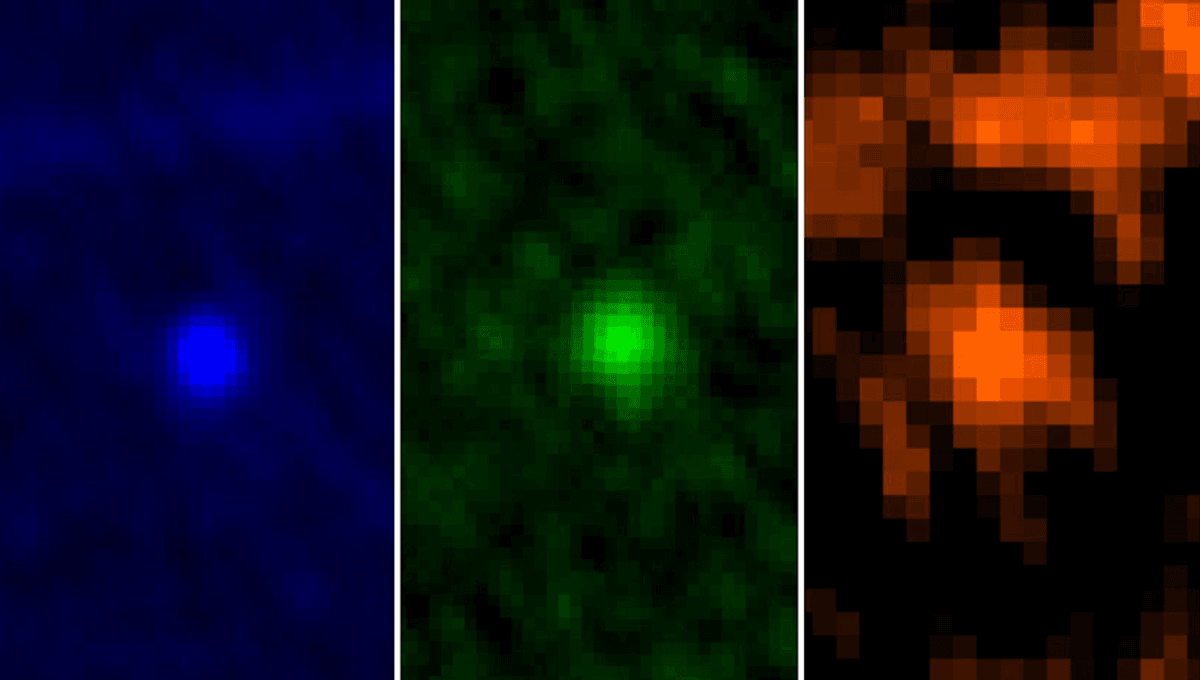
It’s been a pretty good decade so far for witnessing cosmic events. As well as the total solar eclipse and the Sun approaching its peak in activity, creating stunning auroras on Earth, we will soon see an event first recorded in a medieval manuscript, when T Coronae Borealis goes nova.
The decade has a few more treats in stall for us beyond that, including a visit from asteroid 99942 Apophis. When Apophis was first discovered in 2004, observations placed it at level 2 on the Torino impact hazard scale, with a score of 0 meaning the likelihood of impact is zero or thereabouts, and 10 meaning “a collision is certain, capable of causing global climatic catastrophe that may threaten the future of civilization as we know it, whether impacting land or ocean.”
Level 2, while low, is for objects “making a somewhat close but not highly unusual pass near the Earth” and meriting further attention from astronomers. However, further observations in December of that year placed it up to level 4 due to a 1.6 percent chance that the asteroid would hit us in 2029.
“A close encounter, meriting attention by astronomers,” NASA explains of level 4. “Current calculations give a 1 percent or greater chance of collision capable of regional devastation. Most likely, new telescopic observations will lead to re-assignment to Level 0. Attention by public and by public officials is merited if the encounter is less than a decade away.”
Over the years of searching for and monitoring near-earth objects (NEOs), no object has gone above level 4, and due to its potential threat to Earth the object was named Apophis after the Ancient Egyptian god of darkness and destruction. Further observations ruled out a collision in 2029, as well as in 2036 and 2068, though they will still be close encounters.
“A 2068 impact is not in the realm of possibility anymore,” Davide Farnocchia of NASA’s Center for Near-Earth Object Studies said of the asteroid, “and our calculations don’t show any impact risk for at least the next 100 years.”
2029’s visit will be particularly close, with the asteroid coming within 32,000 kilometers (20,000 miles) of the Earth’s surface, closer to the Earth than some of our satellites. The asteroid should be visible from the Eastern Hemisphere without the aid of a telescope or binoculars, with the European Space Agency dubbing its flyby “one of the rarest space events of our lives”.
The event is so rare because of its large size – 375 meters (1230 feet) average diameter – as well as its proximity to the Earth.
“The 2029 flyby is an incredibly rare event,” ESA explained in an X post. “By comparing impact craters across the Solar System with the sizes and orbits of all known asteroids, scientists believe that an asteroid as large as Apophis only comes this close to Earth once every 5,000 to 10,000 years.
During the approach, NASA has plans to visit the asteroid, with its OSIRIS APEX mission, which repurposed the asteroid sampler formerly known as OSIRIS-REx, sending it to greet the asteroid shortly after its flyby.
“Our planet’s gravitational pull is expected to alter the asteroid’s orbit, change how and how fast it spins on its axis, and possibly cause quakes or landslides that will alter its surface,” NASA explains of their planned mission. “OSIRIS-APEX will allow scientists on Earth to observe these changes. Additionally, the OSIRIS-APEX spacecraft will dip toward the surface of Apophis – a ‘stony’ asteroid made of silicate (or rocky) material and a mixture of metallic nickel and iron – and fire its engines to kick up loose rocks and dust. This maneuver will give scientists a peek at the composition of material just below the asteroid’s surface.”
ESA is hoping to visit the asteroid too, as a flyby will help us learn more about planetary defense from such objects.
“Earth’s gravity will ‘stretch’ and ‘squeeze’ Apophis, triggering landslides and revealing lots about the asteroid’s material, structure, density and cohesion,” ESA explained. “This knowledge will help us protect Earth in future.”
ESA reiterated that the asteroid does not pose a threat in 2029, just a spectacular sight, and an opportunity to do some awesome science in space.
Source Link: The World Will Soon Witness "One Of The Rarest Space Events Of Our Lives"